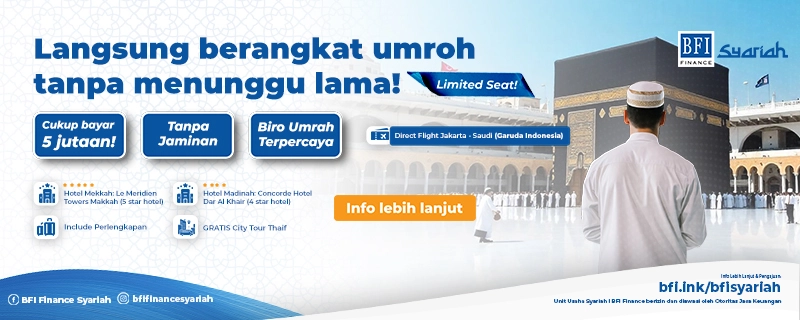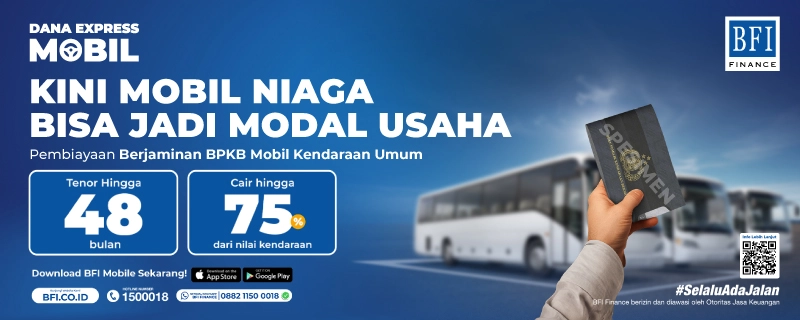With technological advancements, non-cash payment methods have become increasingly popular and easy to use in daily activities. The development of non-cash payment methods means you don't need to carry cash every day. In fact, you can make transactions without even carrying your wallet. All you need is your smartphone or card.
However, many people are still unfamiliar with the types of non-cash payment methods, their benefits, and their drawbacks. In this article, we will explore the types of non-cash payment methods, their benefits, and their drawbacks.
1. 8 Types of Non-Cash Payment Methods
1.1 Card-Based
1. Credit Cards
Credit cards are the most commonly used card-based non-cash payment method today. They allow us to make electronic payments using credit provided by banks or other financial institutions. Credit cards can also be used for purchases worldwide and online. They offer various reward programs, such as cashback or points that can be exchanged for specific products or services.
2. Debit Cards
Debit cards are card-based non-cash payment methods that use funds available in our bank accounts. When making a transaction with a debit card, the funds are directly deducted from our account. Debit cards can be used for payments in stores, restaurants, and online. Unlike credit cards, debit cards only use available funds, helping you manage personal finances and limit spending. Additionally, features like PIN and chip security make transactions safer.
1.2 Electronic-Based
1. E-Wallets
E-Wallets are non-cash payment methods that use smartphone apps to store and make transactions. E-Wallets allow you to make payments without carrying cash or cards. Popular E-Wallets include GoPay, OVO, and Dana. E-Wallets often offer promotions and discounts, making transactions more beneficial. The easy top-up process from bank accounts or certain outlets makes them even more practical.
2. E-Money
E-Money is a non-cash payment method based on technology that is becoming increasingly popular. E-Money consists of electronic balances stored in an app or special card. Users can make transactions by tapping the card or making payments through the associated app. Types of E-Money include e-toll Flazz and BRIZZI.
The advantages of using E-Money include facilitating transactions on toll roads or public transportation. Users can also easily track transaction history to monitor daily usage.
3. Bank Transfers
Bank transfers are a standard non-cash payment method in financial activities. Users can transfer funds from their bank account to the recipient's account without using cash. Bank transfers can be done through various platforms like mobile banking, internet banking, or ATMs. The transfer process is usually quick and secure, with various security features available to protect user information. Additionally, users can transfer funds to other bank accounts domestically and internationally, making various financial transactions easier.
4. QRIS
QRIS is a non-cash payment method that is growing in popularity due to its convenience. Users can make payments by scanning QRIS using a payment app on their smartphone. QRIS is often used in places like shops, restaurants, and events for payments without needing to touch cash or cards. Some payment services also offer promotions and cashback for transactions using QRIS.
1.3 Paper-Based
1. Checks
Checks are one of the oldest non-cash payment methods. A check is a payment order given by the account holder to the bank to pay a certain amount to the recipient. Checks are typically used for large payments such as property purchases or business payments. Despite being an old non-cash payment method, their usage is decreasing with the emergence of more modern and efficient non-cash payment methods. Some challenges with using checks include a clearance time that can take several days and the risk of counterfeit or insufficient funds checks.
2. Bilyet Giro
Bilyet Giro is a payment order issued by a bank customer to transfer a certain amount of funds to the recipient's account at a specified time. Bilyet Giro is often used in business transactions or large due payments. The advantage of using Bilyet Giro is that it simplifies large payments and serves as proof of transaction. However, the verification and clearance process takes time and incurs certain administrative fees. Additionally, using Bilyet Giro requires a good understanding of banking procedures and requirements.
2. Benefits of Non-Cash Payment Methods
2.1 For Users
- Practical and Efficient: Non-cash payments allow users to transfer funds quickly and easily through various platforms like mobile banking, internet banking, or ATMs. Users do not need to carry cash or fill out manual transaction forms.
- Safer: Non-cash payment processes are usually secure with features available to protect user information. Users can use features like security codes, two-factor verification, or tokens provided by banks to ensure transaction security.
- Faster Transactions: With non-cash payments, users can complete transactions quickly without counting cash or waiting for change. With just a few clicks, funds can be transferred to the recipient quickly.
- Track Financial History: Users can track their financial transaction history through non-cash payment services. This information can help users manage their finances, track spending, and create better financial plans.
- Promotions and Discounts: Some non-cash payment services may offer special promotions and discounts for users making transactions using non-cash methods. This can provide additional benefits, such as cashback, discounts, or reward points that can be exchanged for goods or services.
- Health Benefits: By making non-cash transactions, users can reduce the risk of disease transmission through physical cash, such as COVID-19, which was a pandemic in 2020. Avoiding direct contact with cash can help prevent the spread of germs or viruses that may be present on the money.
2.2 For the Economy
- Supports Financial Inclusion: Non-cash payment methods such as bank transfers can help increase financial inclusion by making financial services more accessible to the public. With easy-to-access bank transfer services through mobile apps or internet banking, previously unbanked communities are more open to using financial services.
- Increases Payment System Efficiency: Using bank transfers can increase payment system efficiency with fast and automated processes. In non-cash payment systems, bank transfers can be done electronically with automated processes without manual intervention, reducing the time and costs required in payment processes, both in business transactions and daily activities.
- Increases Transparency: Non-cash transactions like bank transfers can increase transparency in the payment system and help reduce fraud risk. Every transaction done through bank transfers is digitally recorded, including sender data, recipient data, and the transferred amount. This makes it easier for authorities to audit and monitor financial transactions, reducing the risk of fraud and illegal activities.
- Increases Government Revenue: With increased non-cash transactions, the government can more easily track financial transactions and obtain more stable tax revenue. Clearly recorded non-cash transactions can help the government collect revenue from taxes or service fees charged by financial institutions. This stable revenue can be used to fund government programs and infrastructure development.
3. Drawbacks of Non-Cash Payment Methods
3.1 For Users
- Digital Crime Threats: Using non-cash payment methods is vulnerable to digital crimes such as identity theft, phishing, and malware that can harm users. User data security must always be maintained, and users need to be aware of potential threats.
- Additional Fees: Some non-cash payment services may charge additional fees such as administrative fees or transaction fees that can increase users' expenses. Users need to consider these additional fees when using non-cash payment methods.
- Difficulties for Certain Groups: Using non-cash payment methods like bank transfers can be difficult for groups unfamiliar with technology or without access to internet services. This can be a barrier for some communities in utilizing non-cash payment methods.
- Technology Dependency: Using non-cash payment methods makes users more dependent on technology, making them vulnerable to system disruptions or technological failures that can impede transaction processes. Disruptions in internet networks or damage to payment devices can hinder users' ability to make transactions.
- May Trigger Overspending: The ease of making non-cash transactions like bank transfers can trigger users' tendency to shop impulsively and uncontrollably, ultimately causing overspending. Users need to have good control in using non-cash payment methods to avoid falling into unhealthy consumption patterns.
3.2 For the Economy
- Potential for Misuse: Using non-cash payment methods also carries the risk of misuse in the form of money laundering and terrorism financing that is difficult for authorities to track. The spread of funds through hard-to-track non-cash transactions can be exploited by irresponsible parties for illegal purposes.
- Job Loss: The increased use of non-cash payment methods can reduce the demand for cashier or teller services in the banking sector, potentially eliminating jobs for some people. Technological advancements in non-cash payments can replace human jobs with automation, requiring a more active role in anticipating its impact on the workforce.
- Digital Divide: Using non-cash payment methods can deepen the digital divide between those with access and understanding of technology and those without sufficient access or understanding. Not all individuals or regions have the same access to technological infrastructure, leaving those without access behind in utilizing non-cash payment methods.
Sobat BFI, here are things that you need to know about non-cash payment methods. The variety of non-cash payment methods offers security, speed, and convenience in making transactions. However, you need to be more careful when making non-cash transactions. Use these payment methods wisely to avoid any potential downsides.
If you need funds for your daily needs, you can apply for financing at BFI Finance. BFI Finance is a financing company offering multipurpose loans with collateral such as motor vehicle BPKB, car BPKB, and house or shop certificates for your various needs. Apply for your loans at BFI Finance right now!






